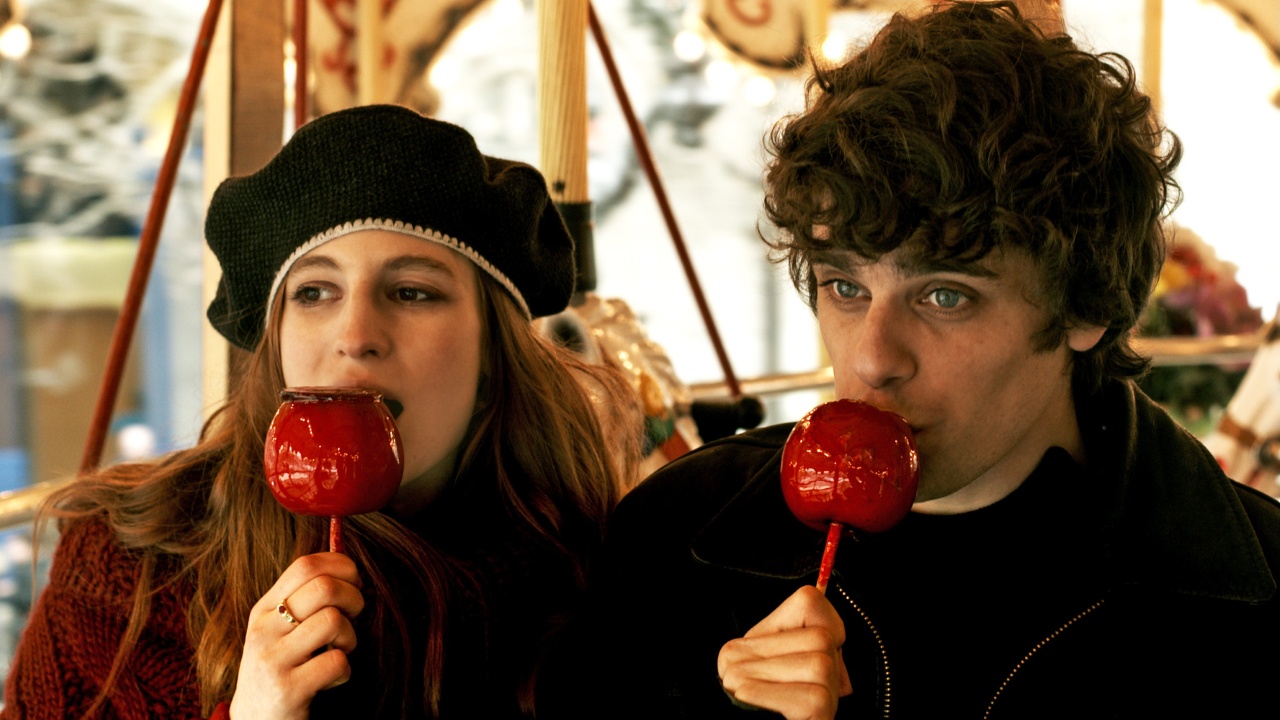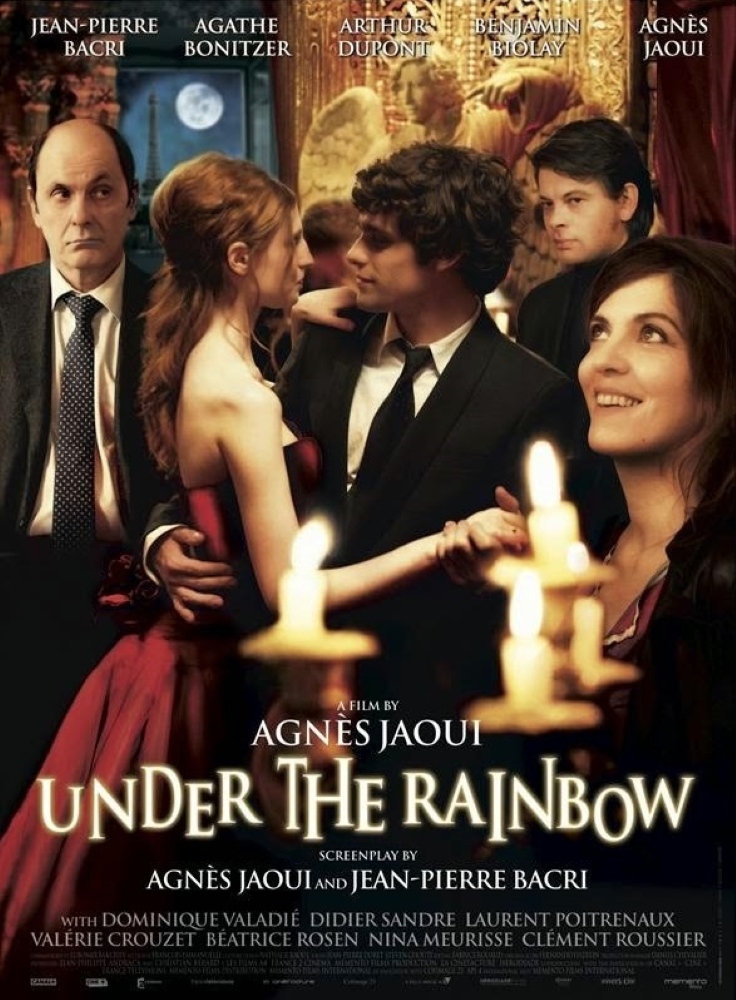(Au Bonte du Conte)
Crew
Director – Agnes Jaoui, Screenplay – Jean-Pierre Bacri & Agnes Jaoui, Producers – Jean-Philippe Andraca & Christian Berard, Photography – Lubomir Bakchev, Music – Fernando Fiszbein, Visual Effects – Def 2 Shout (Supervisor – Frederic Moreau), Production Design – Francois Emmanuelli. Production Company – Les Films A4/France 2 Cinema/Memento Films/La Cinefracture/Herodiade.
Cast
Agatha Bonitzer (Laura Casseul), Arthur Dupont (Sandro), Jean-Pierre Bacri (Pierre), Benjamin Biolay (Maxime Wolff), Dominique Valadie (Jacqueline), Agnes Jaoui (Marianne), Beatrice Rosen (Fanfan), Nina Meurisse (Clemence), Didier Sandre (Guillaume Casseul), Clement Roussier (Julien), Bonny Durand (Morgane), Candela Cottis (Johanna)
Plot
Laura is a teenager who wants to experience being loved. She has a dream of a man with an angel standing behind him who will come and take her hand. Not long after, she meets Sandro at a nightclub and he asks her to dance. However, he has to flee to get to his job and leaves behind a shoe as he runs out. He is struggling to make it as a musician in a small orchestra and makes ends meet by conducting poll research on the street. Laura and Sandro then meet on the street and fall deeply in love. Meanwhile, Sandro’s father Pierre has received a prophecy from a fortune-teller that he will die on March 14th. Despite being a rationalist, he starts to worry as the date nears. His daughter Marianne has moved in but Pierre is not enjoying having her two children around. Meanwhile, Laura meets Maxime Wolff while walking in the woods. She discovers that he is a neighbour and finds herself attracted to him. Maxime is also a musician and has pushed Sandro’s composition to be performed by an important conductor but doing so will mean that Sandro has to fire his good friend Julien. Laura meanwhile surrenders to the charming Maxime and strays from Sandro – only to realise she is only one of several women that Maxime has at his call.
Under the Rainbow – not to be confused with the disastrous Chevy Chase comedy Under the Rainbow (1981) that was set during the making of The Wizard of Oz (1939) – is a French fairytale deconstruction. It comes from the director/actress Agnes Jaoui and her screenwriting partner and husband Jean-Pierre Bacri. (Both play roles in the film, she as the aunt who is learning to drive and Bacri as Sandro’s father who receives the prophecy of his death). The two have previously worked together on the romantic comedies The Taste of Others (2000), Look at Me (2004) and Let It Rain (2008), while Jaoui also wrote Alain Resnais’ Smoking/No Smoking (1993), one of the first films on the theme of alternate timelines resulting from different choices.
Under the Rainbow is a romantic comedy. If that is the only level it worked on, it would be an amiable but none particularly standout effort. The two young leads, Agatha Bonitzer and Arthur Dupont, have an okay chemistry together – even if, beyond a montage with them frolicking around Paris towards the start, they are not together on screen that much. The romance charms but it could never be said that it ignites. The most of the fun in the film comes from the performances around the side – in particular, the comedy that derives from the curmudgeonly Jean-Pierre Bacri and his coping with the prophecy of the coming date of his death, which eventually arrives at a warm and heartfelt uplift.
Where Under the Rainbow does kick in is the idea that Agnes Jaoui and Jean-Pierre Bacri have attached to it – that it is a modern retelling of various fairytales. Or rather one should say that it is a script where resonances from fairytales have been wound in and often deflated or turned on their head. Agatha Bonitzer and Arthur Dupont meet at a dance a la Cinderella but here the sexes are reversed – it is she who comes from the family of privilege and he who is poor and struggling to make ends meet and he rather than her who flees and leaves a shoe behind. She makes a walk through the woods wearing a red coat and meets a handsome stranger with the unsubtle name of Maxime Wolff (Benjamin Biolay), who proceeds to woo her away from her love – although rather than literally devouring her, he is a lady-killer who habitually seduces and abandons women.

There are even resonances of the French fairytale Bluebeard wound in in a scene where Agatha Bonitzer picks up his cellphone and finds a message from another woman and Benjamin Biolay tells her not to open that door lest she find danger awaiting her there. She gets drunk and falls into a sleep from which she cannot be awoken – although when Benjamin Biolay comes and offers to deliver the one thing that always wakens princesses, this proves to be a slap on the face when we were expecting a kiss. There is also Beatrice Rosen as Agatha Bonitzer’s Wicked Stepmother who pointedly offers her a red apple at one point and rather than being obsessed with being the fairest in the land has everyone amazed at the fact she looks only in her thirties while in reality is in her sixties due to obsessive plastic surgery.
French arthouse directors seem to enjoy these sorts of games of deconstructing fairytales – see also Francois Ozon’s Criminal Lovers (1999) and Catherine Breillat’s Bluebeard (2009) and The Sleeping Beauty (2010). The fun of the film is seeing the ways in which the various fairytale elements are wound in, although in itself Under the Rainbow is not fantastical. The complaint might be [PLOT SPOILERS] the somewhat downbeat ending where the two loves do not get together and at the fadeout he finds his true love with someone else. This does also reach an ending that is not very nice for Agatha Bonitzer – she is unceremoniously dumped, last seen wasted and having to be given a slap to bring her out of her sleep. The end implication this leaves the film with is that she has been punished for straying from her true love and for doing so only deserves a slap in the face rather than a kiss of true love.

